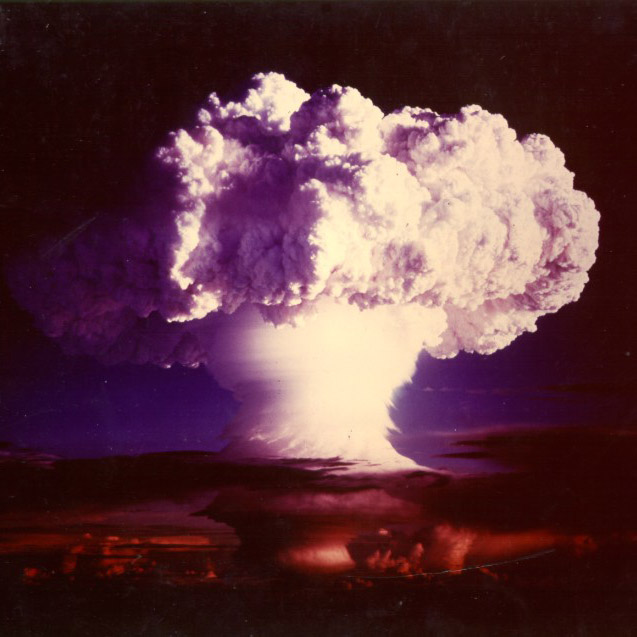Einsteinium
99
Es
Skupina
n/a
Perióda
7
Orbitál
f
Protóny
Elektróny
Neutróny
99
99
153
Hlavné vlastnosti
Protónové číslo
99
Atómová hmotnosť
[252]
Hmotnostné číslo
252
Kategória
Aktinoidy
Farba
n/a
Rádioaktívny
Áno
Named after Albert Einstein
Kryštálová sústava
n/a
História
Einsteinium was discovered as a component of the debris of the first hydrogen bomb explosion in 1952.
It was identified by Albert Ghiorso and co-workers at the University of California, Berkeley in collaboration with the Argonne and Los Alamos National Laboratories, in the fallout from the Ivy Mike nuclear test.
The new element was produced by the nuclear explosion in miniscule amounts by the addition of 15 neutrons to uranium-238.
It was identified by Albert Ghiorso and co-workers at the University of California, Berkeley in collaboration with the Argonne and Los Alamos National Laboratories, in the fallout from the Ivy Mike nuclear test.
The new element was produced by the nuclear explosion in miniscule amounts by the addition of 15 neutrons to uranium-238.
Elektróny v obale
2, 8, 18, 32, 29, 8, 2
Elektrónová konfigurácia
[Rn] 5f11 7s2
Einsteinium is the first divalent metal in the actinide series
Fyzikálne vlastnosti
Skupenstvo
Tuhé látky
Hustota
8,84 g/cm3
Teplota topenia
1133,15 K | 860 °C | 1580 °F
Teplota varu
-
Skupenské teplo topenia
n/a kJ/mol
Skupenské teplo varu
n/a kJ/mol
Tepelná kapacita
- J/g·K
Množstvo v zemskej kôre
n/a
Množstvo vo vesmíre
n/a

Zdroje obrázkov: Wikimedia Commons (National Nuclear Security Administration)
Einsteinium bolo prvýkrát pozorované v spade z jadrového testu Ivy Mike
Registračné číslo CAS
7429-92-7
PubChem CID číslo
n/a
Atómové vlastnosti
Atómový polomer
-
Kovalentný polomer
-
Elektronegativita
1,3 (Paulingova stupnica)
Ionizačný potenciál
6,42 eV
Atómový objem
28,5 cm3/mol
Tepelná vodivosť
0,1 W/cm·K
Oxidačné stavy
2, 3
Aplikácie
Einsteinium is mainly used for scientific research purposes.
The rare isotope einsteinium-254 is favored for production of ultraheavy elements.
Einsteinium-254 was used as the calibration marker in the chemical analysis spectrometer of the Surveyor 5 lunar probe.
The rare isotope einsteinium-254 is favored for production of ultraheavy elements.
Einsteinium-254 was used as the calibration marker in the chemical analysis spectrometer of the Surveyor 5 lunar probe.
Einsteinium is harmful due to its radioactivity
Izotopy
Stabilné izotopy
-Nestabilné izotopy
240Es, 241Es, 242Es, 243Es, 244Es, 245Es, 246Es, 247Es, 248Es, 249Es, 250Es, 251Es, 252Es, 253Es, 254Es, 255Es, 256Es, 257Es, 258Es